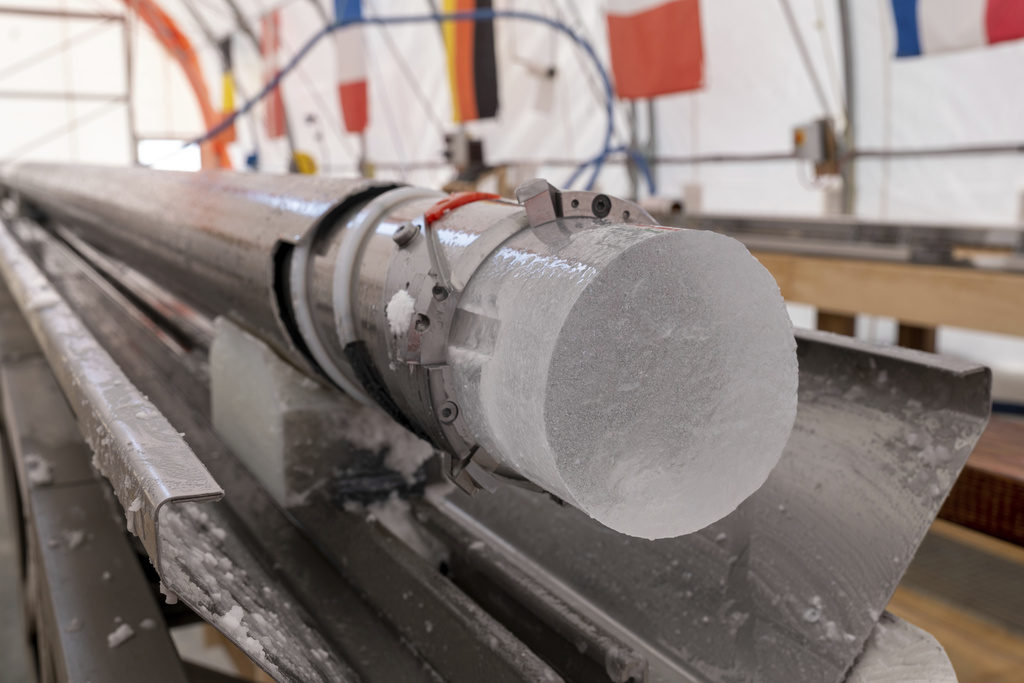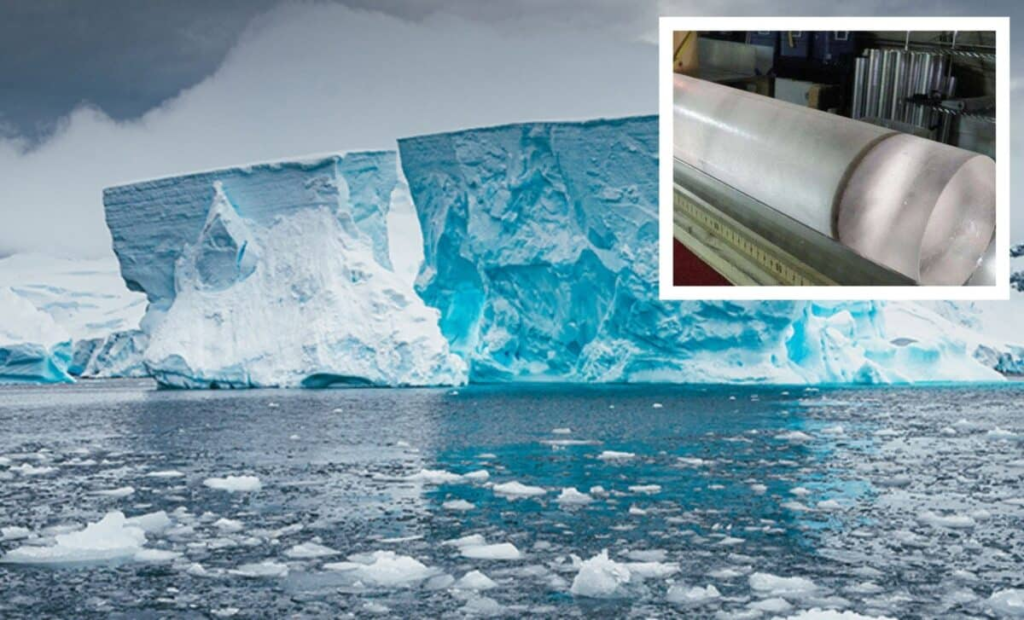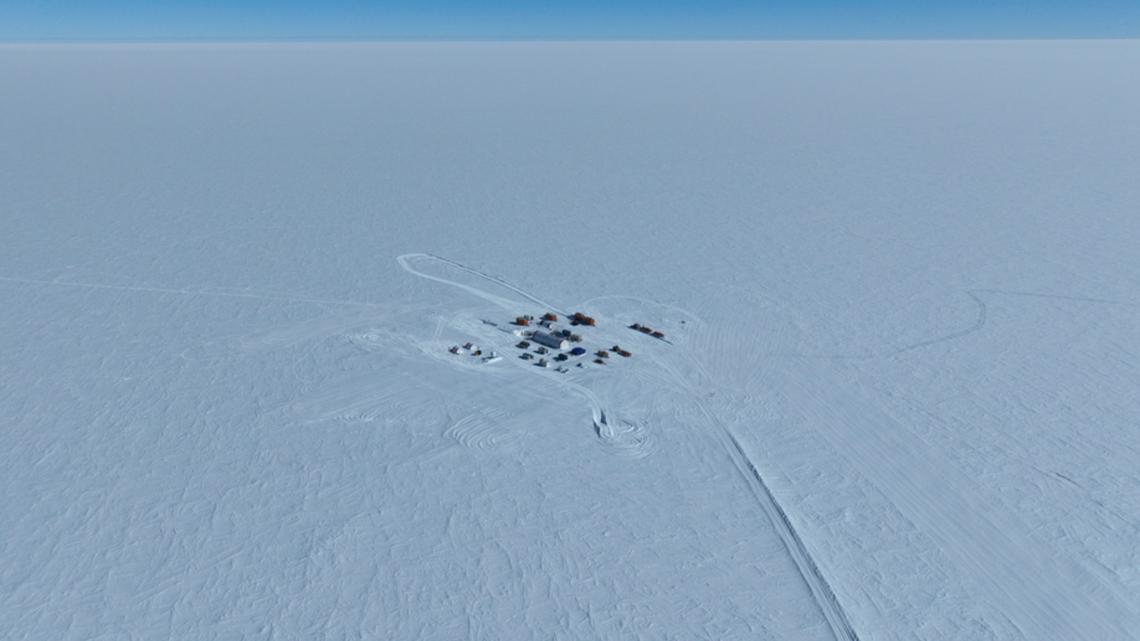Antarctica, Earth’s frozen frontier, has once again yielded a treasure trove of history hidden beneath its icy expanse. An international team of scientists has successfully drilled into the depths of the Antarctic bedrock, extracting an ice core that dates back over 1.2 million years.
This extraordinary discovery promises to reshape our understanding of Earth’s atmospheric history and the intricate relationship between greenhouse gases, climate cycles, and global temperatures.
Unlocking Earth’s Ancient Atmosphere
The ice core, drilled from Little Dome C near the Concordia Research Station, is one of the most significant scientific achievements of our time. This location, with average temperatures plummeting to minus-35°C, provided an ideal site for the Beyond EPICA project, a collaborative effort spearheaded by Italy and funded by the European Union.
Over the course of four years, a dedicated 16-member team worked tirelessly during the Antarctic summers to drill nearly two miles into the ice sheet, finally reaching the bedrock in January.
What makes this discovery particularly groundbreaking is the age of the ice core. Preliminary isotope analyses confirm that the ice dates back at least 1.2 million years, surpassing the age of any previously retrieved core.
Read : Priceless Piece of Moon Donated to Ireland by Apollo Astronauts Destroyed by Fire
According to Carlo Barbante, an Italian glaciologist and the coordinator of Beyond EPICA, the core offers an unparalleled glimpse into Earth’s atmospheric past.
Read : McDonald Island: Exploring the Enigmatic Beauty of the Australia
“This ice core allows us to analyze the composition of greenhouse gases, chemicals, and dusts from over a million years ago,” Barbante noted. The findings have the potential to unlock vital information about Ice Age cycles, the evolution of atmospheric carbon dioxide and methane, and the planet’s natural climate variability.
The Importance of Ice Core Records From Antarctica
Ice cores serve as time capsules, preserving a detailed record of Earth’s climate history. Trapped air bubbles within the ice layers contain ancient atmospheric gases, providing direct evidence of past greenhouse gas concentrations. By analyzing these gases, scientists can reconstruct a timeline of Earth’s climate and identify patterns of natural variability and change.
One of the most crucial findings from previous ice core studies, such as those dating back 800,000 years, is the revelation that greenhouse gas levels, including carbon dioxide and methane, never exceeded pre-Industrial Revolution concentrations. Even during warmer interglacial periods, these levels remained relatively stable.
In stark contrast, today’s atmospheric carbon dioxide levels are roughly 50% higher than any levels recorded during the past 800,000 years.

This disparity highlights the profound impact of human activities, particularly the burning of fossil fuels, on Earth’s climate system. The newly retrieved 1.2-million-year-old ice core will extend this timeline further, offering fresh insights into how natural climate systems operated before human influence.
The data from the core is expected to shed light on a critical transition in Earth’s history known as the Mid-Pleistocene Transition.
This period marked a significant shift in the duration and intensity of Ice Age cycles, changing from 40,000-year cycles to 100,000-year cycles. Understanding this transition and its relationship with atmospheric carbon levels will be key to predicting future climate patterns.
A Gateway to Climate Solutions
The significance of this discovery extends beyond its historical insights. As Richard Alley, a Penn State climate scientist unaffiliated with the research, remarked, the knowledge gained from this ice core is “truly, truly, amazingly fantastic.”
It equips scientists with invaluable tools to assess both natural climate variability and the accelerating effects of human-induced climate change.

This information can inform climate models, helping policymakers and researchers develop strategies to mitigate the impacts of global warming. By understanding the natural mechanisms that regulate Earth’s climate, scientists can better predict how the planet might respond to rising greenhouse gas emissions.
Moreover, the Beyond EPICA project underscores the importance of international collaboration in addressing global challenges. Funded by the European Union and involving scientists from multiple nations, this endeavor exemplifies how shared resources and expertise can drive groundbreaking research.
As we face an uncertain climatic future, the 1.2-million-year-old ice core serves as a stark reminder of the delicate balance that has governed Earth’s climate for millennia. It also reinforces the urgency of collective action to address the unprecedented changes unfolding in our atmosphere today.
The journey to retrieve this ancient ice core was no small feat, requiring years of meticulous planning, cutting-edge technology, and unwavering determination. Yet the rewards of this discovery are immeasurable, offering a once-in-a-lifetime opportunity to peer into Earth’s distant past and glean lessons for a sustainable future.
let’s enjoy few years on earth with peace and happiness….✍🏼🙏

